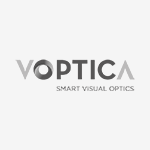Purpose: Accurate refraction is required to provide the best quality of vision for every ophthalmic correction. Manifest refraction is the current gold standard, but may be subject to significant errors. Wavefront sensors provide objective refraction but lack the subjective influence on vision. Combining both objective and subjective refraction techniques may possibly provide more accurate refraction data. We compared this type of approach using an adaptive optics (AO) system and a standard optometric procedure using a phoropter.
Methods: The Adaptive Optics Vision Analyzer (AOVA; Voptica S.L., Murcia, Spain) is a clinical instrument that combines an objective characterization of the refractive state of the eye by a Hartmann-Shack (HS) sensing, with a posterior stage of subjective refraction refinement within the same system. A liquid crystal spatial light modulator induces the desired optical conditions while a micro-display presents visual tests through the modified optics. An artificial pupil of 4.5 mm was used. Objective refraction is calculated from a series of HS images. Then, AO-guided refraction consists of a subjective refinement for both defocus and astigmatism within the same instrument. The complete procedure is repeated 3 times. A standard refraction procedure using a phoropter was also repeated 3 times. A group of 30 healthy young subjects were studied under normal visual conditions. The outcomes were compared in terms of throughput time, intra-subject repeatability, and agreement between methods.
Results: The average spherical equivalent was -0.87 D and -0.71 D for the AO-guided and standard refraction respectively. Standard deviation averaged through subjects was 0.14 D and 0.35 D respectively. Average visual acuity was -0.07 and -0.01 LogMAR for each procedure. The AO approach shows a significant reduction of around 60% in time required to complete the refractive evaluation as compared to the phoropter-based procedure. The AOVA added another advantage for normative studies since the effective pupil diameter was the same for every subject.
Conclusions: AO-guided refraction provides more accurate data in a shorter consultation time. The advantages of this approach are beyond standard refraction since also permit the evaluation of more advanced optical properties of the eye such as asphericity or special phase profiles by using AO.
Methods: The Adaptive Optics Vision Analyzer (AOVA; Voptica S.L., Murcia, Spain) is a clinical instrument that combines an objective characterization of the refractive state of the eye by a Hartmann-Shack (HS) sensing, with a posterior stage of subjective refraction refinement within the same system. A liquid crystal spatial light modulator induces the desired optical conditions while a micro-display presents visual tests through the modified optics. An artificial pupil of 4.5 mm was used. Objective refraction is calculated from a series of HS images. Then, AO-guided refraction consists of a subjective refinement for both defocus and astigmatism within the same instrument. The complete procedure is repeated 3 times. A standard refraction procedure using a phoropter was also repeated 3 times. A group of 30 healthy young subjects were studied under normal visual conditions. The outcomes were compared in terms of throughput time, intra-subject repeatability, and agreement between methods.
Results: The average spherical equivalent was -0.87 D and -0.71 D for the AO-guided and standard refraction respectively. Standard deviation averaged through subjects was 0.14 D and 0.35 D respectively. Average visual acuity was -0.07 and -0.01 LogMAR for each procedure. The AO approach shows a significant reduction of around 60% in time required to complete the refractive evaluation as compared to the phoropter-based procedure. The AOVA added another advantage for normative studies since the effective pupil diameter was the same for every subject.
Conclusions: AO-guided refraction provides more accurate data in a shorter consultation time. The advantages of this approach are beyond standard refraction since also permit the evaluation of more advanced optical properties of the eye such as asphericity or special phase profiles by using AO.


